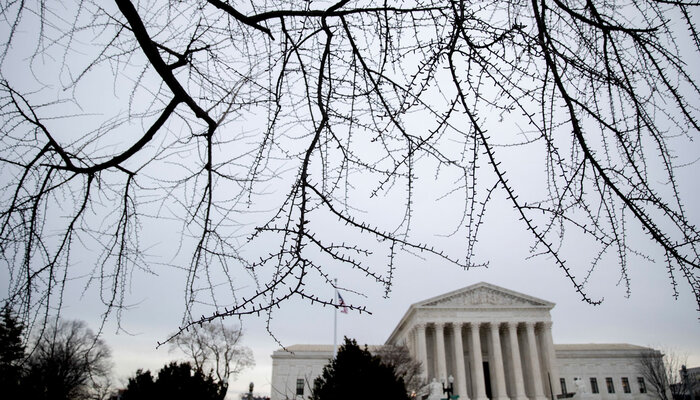The average term length of U.S. Supreme Court justices is by far the longest among established constitutional democracies. With no limits on tenure, the average Supreme Court term since 1993 has reached 28 years — over twice as long as most peer countries — making the United States a notable global outlier.
What does the United States gain and lose by granting Supreme Court justices this exceptionally long tenure? Comparative analysis indicates that other democracies achieve judicial independence and effectiveness with much shorter judicial terms, whether set by law or limited by mandatory retirement rules, or both. Longer terms don’t earn the United States better judicial performance.
Further, the fixed or age-limited terms in other countries allow more frequent and predictable high court vacancies than in the United States, reducing the stakes of judicial appointments and helping to keep the composition of the high court broadly in line with changing views in wider society. With life tenure, the United States sacrifices these other goals without gains in judicial independence.
Unlimited Terms Offer No Added Benefits for Judicial Independence
In a constitutional democracy, it is the role of the judiciary to ensure that the rules, embodied in the constitution and the laws, are respected. To carry out this function effectively, the courts must be independent — that is, able to decide cases in accordance with their sincere understanding of what the law requires, without fear of punishment or hope of reward from powerful actors with a stake in case outcomes. Particularly at the high court level, judicial independence means judges do not have to tailor their rulings to the wishes of the government, enabling them to hold all actors, including government officials, accountable to the law.
Making this “necessary independence” a priority, the United States has, to date, granted high court justices life tenure. This practice derives in part from the fear articulated by Alexander Hamilton that “periodical appointments, however regulated, or by whomsoever made, would, in some way or other, be fatal” to judicial independence. Yet many other constitutional democracies have “periodical appointments” or other limits on high court tenure, and the data shows it has not been “fatal” to judges’ ability to display independence and uphold the rule of law.
Notably, the United States’ exceptionally long high court tenure does not translate into greater judicial independence compared to peer countries, as assessed by a survey of experts for the Varieties of Democracy project. While the 2013–2023 mean high court independence score for the United States is high, at almost 3.6 out of 4, five countries score higher, including Switzerland with 6-year fixed terms, Portugal with 9-year fixed terms, and Australia, Norway, and Sweden, whose mandatory retirement ages result in term lengths of between 11 and 15 years. Eight more countries with term lengths of between 9 and 14 years (fixed or in fact) have average high court independence scores whose confidence intervals overlap with those of the United States, as reflected by the gray shading.
This data indicates that life tenure is not necessary for a high court to be able to rule independently of government wishes. This is consistent with much larger, statistical analyses that found no relationship in democratic countries between any formal high court selection and tenure rules and judicial independence.
Moreover, the latest data — taken from a combination of expert and general population surveys — from the World Justice Project on “whether the judiciary has the independence and the ability in practice to exercise effective checks on the government” reveals that the United States does not outperform its peers on this crucial measurement, despite having by far the longest high court term length. (Switzerland was not included in the World Justice analyses.) Other countries obtain high judicial performance with secure but limited and much shorter high court terms.
It is also worth noting that among countries that appoint judges for life, the United States is an outlier in the young average age of appointment — 50.8 for the current Supreme Court. Given this, even with a mandatory retirement age as low as Sweden’s (67), the United States would still have the longest average high court tenure in the world.
Unlimited Terms Have Clear Costs
The comparative data suggest that the United States reaps no added rule-of-law gains from granting its high court justices life tenure, but it does incur additional costs other countries manage to avoid. Recognizing the power of high courts to make decisions that affect the lives of millions, other constitutional democracies have opted for appointment and tenure rules that connect these courts to the political process in regulated, predictable ways. Such rules reduce the chances that one actor or party can lock in a “politically one-sided” high court that systematically favors their views and interests. Among the institutional mechanisms that contribute to continuously refreshed and more balanced high courts are limited judicial terms, which produce more frequent and scheduled court vacancies. Regular and predictable turnover increases the likelihood that political change in the legislative and executive branches will be reflected in high court appointments, preventing long-lasting, systemically biased courts.
The above chart reflects data on appointment dates of all high court justices in each country since 1990 or since the creation of the court or the implementation of a major change to its structure. This latter criterion applies to Chile (2006), Czechia (1993), South Africa (1994), and the U.K. (2009).
The chart illustrates how life tenure renders the United States exceptionally vulnerable to imbalanced and stale Supreme Court composition. Peer democracies, no matter the size of their high court, have shorter average intervals between appointments and less variation between shortest and longest interval than does the United States.
Especially given the expansion of judicial power in recent years, the relative infrequency and unpredictability of Supreme Court vacancies in the United States has raised the stakes of judicial appointments to ultra-high levels. This incentivizes “hardball confirmation tactics” and puts at risk the Supreme Court’s institutional legitimacy.
Time to Reconsider Life Tenure
It is not easy to build and maintain a strong and independent judiciary, and the United States is among a relatively small set of countries that has done so. Institutional reforms to the U.S. Supreme Court should not be undertaken lightly, but comparative data does not support the claim that any change would be fatal to judicial independence and integrity. Moreover, public confidence in the Court has declined precipitously in recent years, with surveys showing that the Court is increasingly seen as ideologically imbalanced.
Life tenure may have made sense as a means of securing judicial independence centuries ago, but today it has diminishing returns and mounting costs. It is thus time for a corrective, and other democracies prove it can be done with little risk to judicial independence — and the potential to build a more balanced and legitimate Court.
Lisa Hilbink is professor of political science at the University of Minnesota, Twin Cities and faculty in the judicial studies graduate program at the University of Nevada, Reno.






